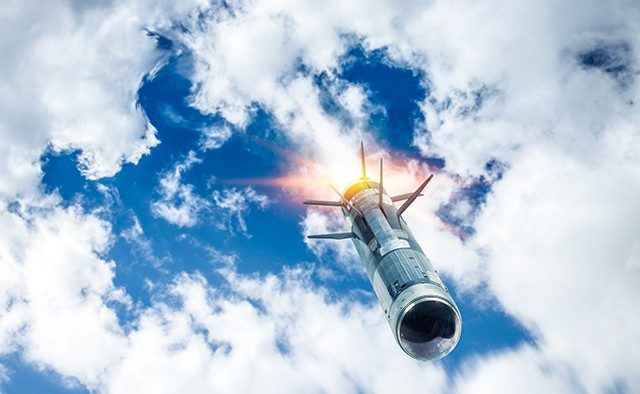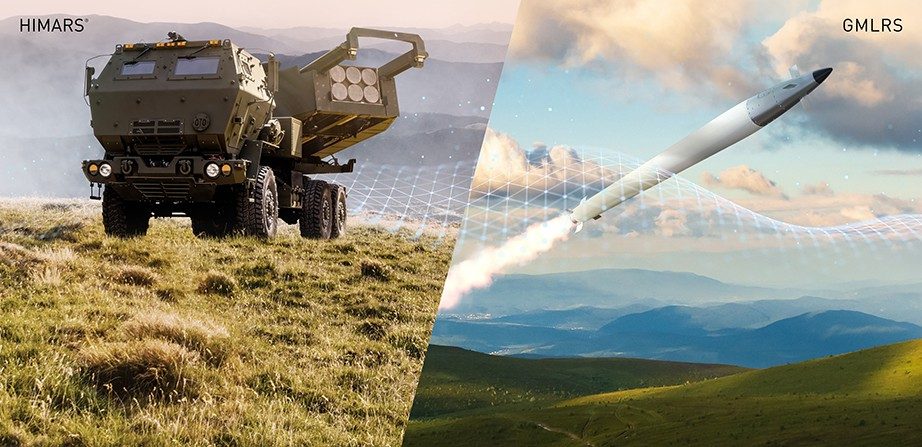Ramped Production Supports Future Deterrence Needs
As current and future deterrence needs evolve, Lockheed Martin continues to increase the delivery of critical defense systems. We’re prioritizing the production ramp up of key capabilities that are currently bolstering deterrence around the globe. In our facilities across the U.S., production has been increased on Javelin, HIMARS, GMLRS, PAC-3 Missile Segment Enhancement (MSE) and more.
“We’re taking thoughtful, proactive steps to increase the resiliency and sustainability of the defense industrial base so it can quickly respond when crises arise,” said Tim Cahill, president of Lockheed Martin Missiles and Fire Control. “By bringing advanced processes and tools to production lines, we are ensuring the delivery of capabilities that address emerging threats across all domains.”
As part of our 21st Century Security® vision, we’re diversifying the supply chain, investing in anti-fragility measures and reducing compliance burdens for small and medium-sized businesses. Digital transformation also plays a critical role and is the foundation of 1LMX, the largest internal program ever undertaken by the company. At the core of 1LMX, we are re-engineering our internal processes by providing the automations and capabilities needed to drive efficiency, increase velocity and enhance our key captures and programs. This includes deploying robotics and factory simulations while investing in long-lead procurement to cut missile production time, increase capacity and maintain manufacturing excellence.
With Javelin as a critical capability for the U.S. Army and more than 25 allied countries around the world, the Javelin Joint Venture (JJV) is working with the Javelin Project Office to further accelerate deliveries ahead of contract dates to meet increased demand.
With the JJV ramping to 3,960 per year by late 2026, a critical part of being able to ramp Javelin production capacity is ensuring Lockheed Martin has enough test stations on the Javelin production floor. Test stations provide quality checks during various steps of the final assembly process. The Javelin team is working on designing and deploying new test stations to the production floor at the Pike County Production Facility in Troy, Alabama, and our facility in Ocala, Florida.
The addition of these newly designed test stations will support increased production rates and provide new cyber-compliant innovative technology that will allow the Javelin production line to be more efficient and agile as production capacity ramps. One example is how the team is implementing the addition of real-time historic production test station performance and results monitoring capability through the use of production data automation. Another example is integrating batch testing capabilities to the test stations that allow for enhanced productivity, which will support efficient processes as we ramp up production.
The Javelin team is also focusing on the supply chain ramp, working with suppliers to increase their production capacity by late 2025. As we bring the newly designed test stations online, procure additional tooling and equipment, hire and train new employees and ramp our supply chain, we will steadily increase production until the 3,960 per year capacity is reached in late 2026.

Javelin: The world's premier shoulder-fired anti-armor system.
As the world’s most advanced air defense missile, PAC-3 Missile Segment Enhancement (MSE) provides crucial protection against tactical ballistic missiles, cruise missiles, hypersonics and aircraft.
As global tensions increase demand for advanced, proven air and missile defense systems, Lockheed Martin is prioritizing increasing PAC-3 production capacity to ensure efficient, agile production.
Lockheed Martin is working closely with our suppliers to develop a plan for them to produce critical subcomponents at a rate higher than 650 to ensure the PAC-3 supply chain is ready to support a rate of 650 PAC-3 MSEs per year. Also, Lockheed Martin is standing up new tooling and test equipment at PAC-3 manufacturing sites and supplier facilities.
“We’re committed to continuing our ramp up and delivering in excess of our stated capacity for the next several years to ensure our partners can defend against evolving threats,” said Brian Kubik, vice president of PAC-3 programs.
The new production processes, equipment, digital transformation tools and a mission-first workforce have all contributed to ramping up production. In 2022, Lockheed Martin opened an 85,000-square-foot building expansion (AUR III) at our Camden, Arkansas, facility to support increased production capacity for PAC-3 MSEs.
In 2024, the PAC-3 team continues to set record production numbers as the team ramps up production and we’re on track to finish this year with a record high of more than 500 PAC-3 MSEs.

The world’s most advanced air defense missile – PAC-3 MSE.
Long-range precision strike capabilities have proven to be essential tools to deter and rapidly respond to threats. As such, the U.S. Army and global partners are expanding their precision fires launcher fleets and increasing munition stockpiles.
To meet the need, Lockheed Martin continues to accelerate production and deliver these 21st Century Security solutions with integrated, interoperable and future-ready capability.
HIMARS production has increased from 48 to 60 per year and is on track to meet 96 annual capacity by the end of 2024. To achieve this, we have increased tooling and continue working with our supply chain to shorten manufacturing lead time.
Earlier this year, the U.S. Army awarded contracts worth up to $2.8 billion to include a FY24 production contract for the launchers and associated equipment as well as an Indefinite-Delivery, Indefinite-Quantity (IDIQ) award to support future HIMARS awards for fiscal years 2025 to 2028.
As demand for the system grows, Lockheed Martin continues to modernize and enhance launcher capability to help customers stay ahead of emerging threats as well as to meet requirements for capability, range and interoperability with more than 20 coalition partners.
GMLRS is a go-to precision fires capability supporting the defense of freedom and bolstering deterrence around the globe. Procured by domestic and global military partners for more than 40 years, GMLRS continues to provide 21st Century Security solutions against sophisticated threats.
Lockheed Martin is accelerating the rocket’s production and recently delivered the 75,000th GMLRS to the U.S. Army, supporting contracts worth up to $4.8 billion for the system and associated equipment. The Army also awarded a contract in October worth up to $4.1 billion as part of a multiyear procurement for GMLRS and Extended-Range GMLRS.
“We continue to work closely with the Army and supply chain partners, who are moving with unprecedented speed, to ramp production capacity and deliver this highly reliable, combat-proven rocket,” said Dave Griser, vice president of Precision Fires Rockets.
GMLRS comes in two variants, each with its own tactical advantages. The unitary warhead addresses point targets, and the Alternative Warhead (AW) is designed for imprecisely located (area) targets, leaving no unexploded ordnance on the field. It’s pin-point accuracy and reliability reduce the number of rockets needed to defeat land-based targets.
The Extended-Range variant, ER GMLRS, recently entered production and doubles the range of the current rocket from 70km to 150km offering enhanced flexibility.
“We’ve seen an increase in demand for this versatile rocket because GMLRS provides strategic advantage, unmatched accuracy and it’s cost-effective,” said Griser.
Lockheed Martin will achieve a capacity of 14,000 in 2025.





